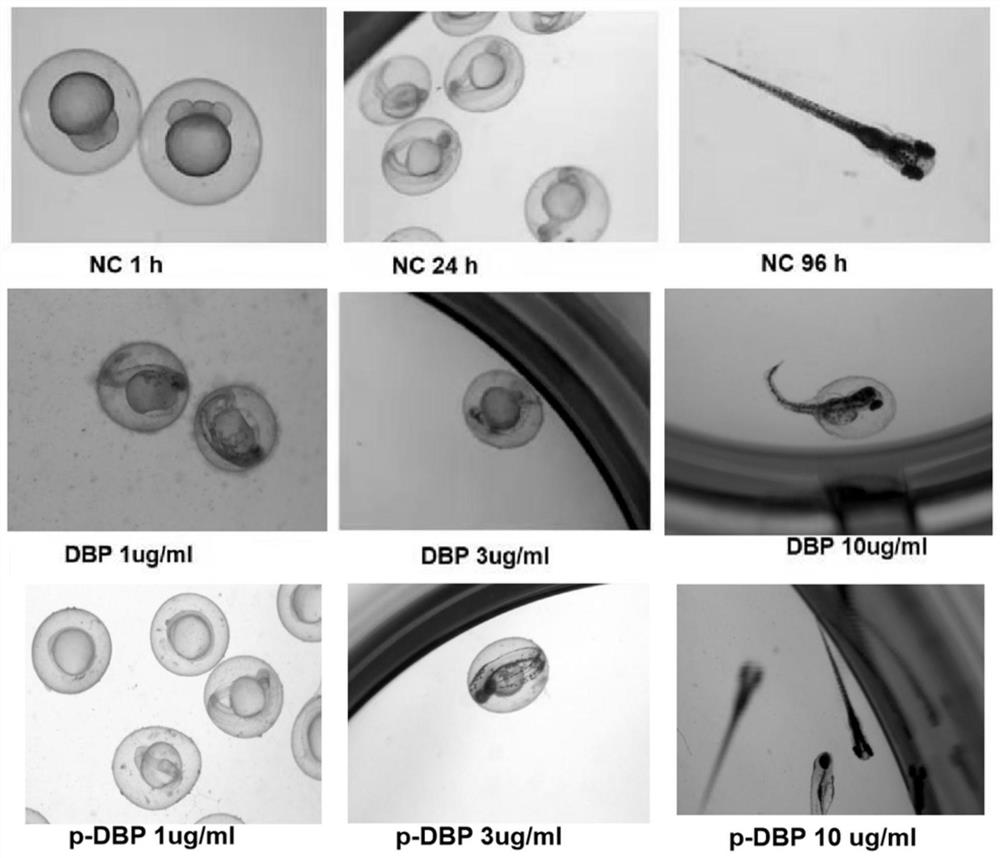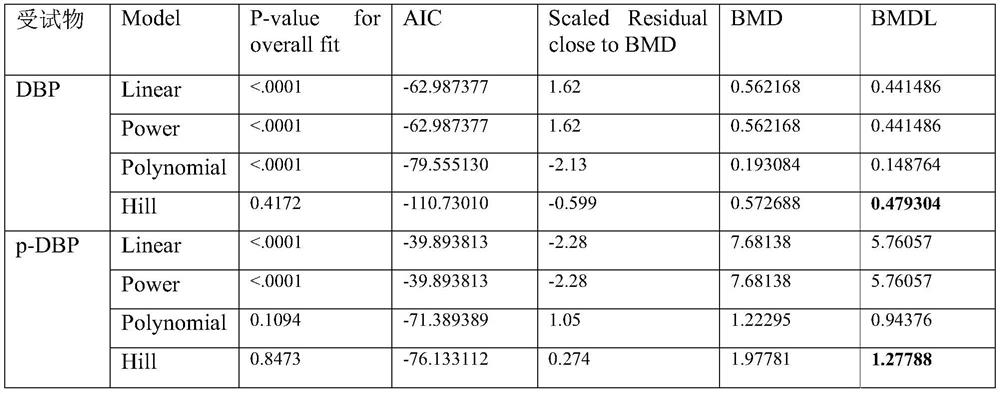Method for reducing dibutyl phthalate
A technology for dibutyl phthalate and reduction, which is applied in the field of reduction of dibutyl phthalate, can solve the problems of large-scale application of secondary pollution, insufficient degradation, slow process and the like, so as to reduce the toxic effect of DBP , Environmentally friendly and easy to operate
- Summary
- Abstract
- Description
- Claims
- Application Information
AI Technical Summary
Problems solved by technology
Method used
Image
Examples
Embodiment
[0045] The present invention provides the following experiments to verify the effect of low-temperature plasma on reducing DBP.
[0046] 1. Method:
[0047] DBP was treated with low-temperature plasma, and the treatment solution was subjected to isotope dilution liquid chromatography-tandem mass spectrometry (LMS) to detect the elimination efficiency, and the treatment solution was subjected to zebrafish acute embryo experiment (FET) to determine the biological effect.
[0048] 2. Materials and Reagents
[0049] Plasma generation device, DBP samples, standard products, plates, centrifuge tubes, water for sterilization, zebrafish breeding system (Beijing Aisheng Technology Co., Ltd.), etc.
[0050] 3. Experimental steps:
[0051] (1) Dosing
[0052] DBP, 1g / ml, add ethanol to dissolve to 0.5g / ml, add 1% BSA to form nanoemulsion, dilute to 0.1mg / ml with ultrapure water, and use for plasma treatment;
[0053] (2) Plasma treatment
[0054] The power supply used in this method...
PUM
 Login to View More
Login to View More Abstract
Description
Claims
Application Information
 Login to View More
Login to View More - R&D
- Intellectual Property
- Life Sciences
- Materials
- Tech Scout
- Unparalleled Data Quality
- Higher Quality Content
- 60% Fewer Hallucinations
Browse by: Latest US Patents, China's latest patents, Technical Efficacy Thesaurus, Application Domain, Technology Topic, Popular Technical Reports.
© 2025 PatSnap. All rights reserved.Legal|Privacy policy|Modern Slavery Act Transparency Statement|Sitemap|About US| Contact US: help@patsnap.com



